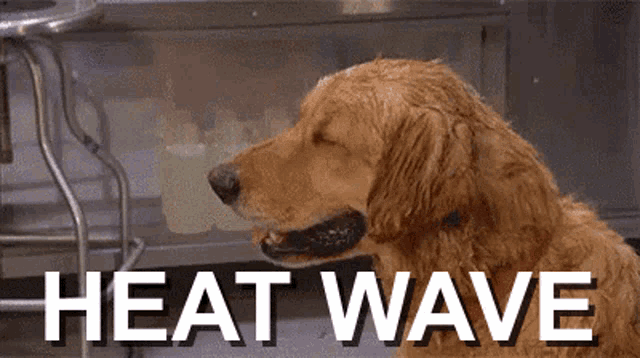
Financial Education
8 tips to cut summer AC costs in Arizona
In this article
- Beat the heat, not your budget! Tackle soaring summer electric bills with a few tips.
- Adjust your thermostat, use fans, change filters and more.
- Save in the long run with HVAC tune-ups, a new unit or energy-efficient windows.
There are three little words that strike fear into the hearts of desert dwellers every year: summer electric bill. Just when you think it’s safe to view your statement, the temperature outside goes from bake to broil, and your utility bill threatens to incinerate your savings goals. Talk about a heat wave!

Tenor: @NobleDame
Hilarious GIFs and memes aside, you probably won’t be laughing if your monthly electric bill this summer costs more than a payment on a new car. Thankfully, there are multiple ways you can take control of your summer AC costs.
More affordable, short-term fixes
Let’s start with some of the smaller (but still effective) ways you can make your AC unit more efficient.
Turn up the temp.
This one’s obvious, but the lower you set your thermostat in summer, the more you’ll pay in electricity costs. SRP estimates you could save up to 3% on cooling costs for each degree over 80. That savings could really add up when your summer electric bill is $300 or more.
Of course, you’ll want to be smart about when and how you make this change. The health and safety of people and pets should be a priority. Set your thermostat to 85 while you’re away, then lower it to your comfort level as needed when you and your furry friends are home (for most pets, that’s 75-80 degrees).
Pro tip: If you don’t already have one, install a programmable smart thermostat. This way, you can preset temperature controls throughout the day and change them remotely.
Fan yourself.
Ceiling fans do wonders to make a warm room feel more tolerable. Rather than turning your AC down every time you’re sticking to your leather couch, switch on a ceiling or stand fan. They don’t do much to lower the actual room temperature though, so flip the fan switch off when you’re not there.
Pro tip: In the summer months, make sure your fan blades are rotating counterclockwise. It pushes air down and creates a cool breeze!
Change your filters.
Dirty air filters make it harder on both you and your air conditioning unit. Your HVAC system will have to work harder to be effective because of all the filter buildup, just like your lungs will have to work harder to filter out all those extra pollutants. Plus, let’s face it — dirty filters are just gross!
Home Depot recommends changing cheaper fiberglass air filters every 30 days. Pricier pleated air filters can last up to six months, but if you have pets or live in a large city with high pollution (Hello, dusty Phoenix!), changing more frequently is recommended.
Set your AC on “auto” pilot.
Switch the setting on your thermostat from “ON” to “Auto” for a quick savings boost. On this setting, your fan will only engage when it’s time to cool the place down, rather than remaining constantly in motion.
Close the blinds.
Closing your curtains and/or blinds reduces the amount of sunlight and heat streaming into your home. It’s easy to do and won’t cost you a thing assuming you already have window coverings installed. Sure, you might feel like a vampire, but saving on your summer electric bill might be worth it.
More expensive, long-term fixes
If you’re looking to corral your out-of-control air conditioning bill even more, there are several options that cost money up front, but may save you a lot in the long run.
Have your AC unit serviced.
If you’ve raised your thermostat temperature, shuttered your windows and done everything else you can to cut down on energy consumption and your bill still seems too high, your equipment could be the problem.
Before scrapping your HVAC system for a more efficient model, have an expert come inspect it. Think of your AC like a car. If your trusty sedan isn’t performing like it usually does, you probably won’t rush to get a brand-new model — at least not yet. As a rule of thumb, have your home’s AC system inspected and tuned up annually or bi-annually, to make sure things are running smoothly and efficiently.
Get a new unit.
Regular maintenance can only do so much if your AC unit is just too old or inefficient. If you’re looking to upgrade your system, pay attention to the Seasonal Energy Efficiency Ratio (SEER) ratings, which tell you how efficient an HVAC unit is. For context, some older systems may have a SEER rating of 6 or lower. New standards from the Department of Energy, effective 2023, require a minimum SEER of no less than 14 SEER.1 In the Southwest region, new equipment must also meet Seasonal Energy Efficiency 2 (SEER2) requirements introduced by the Department of Energy, which specify a rating of 15 SEER for units larger than 45,000 British Thermal Units (BTU).2 If you’re not sure where to start, check out ENERGY STAR's list of recommended central air conditioners.
Install new windows.
If you’re constantly faced with larger-than-normal electric bills, your windows could potentially be a problem. Double-pane windows are more efficient than single-pane windows because they’re better at keeping heat out and cool air in.
Not able to foot the bill for new windows right now? Make sure to check your window seals for air leaks in the meantime and caulk any problem areas as soon as possible. Adding protective shade screens and weather stripping can also help.
Cut cooling costs starting today
According to SRP, up to 50% of your home’s summer power bill comes from cooling. Even outside the Valley, seasonal heat waves can wreak havoc on your comfort — and your wallet. By following these eight tips, you’ll be able to keep your cool without breaking the bank!
Recommended Articles
Subscribe to our blog
Fill out the form below to sign up for our blog.







